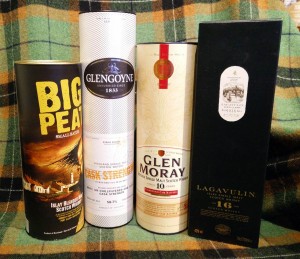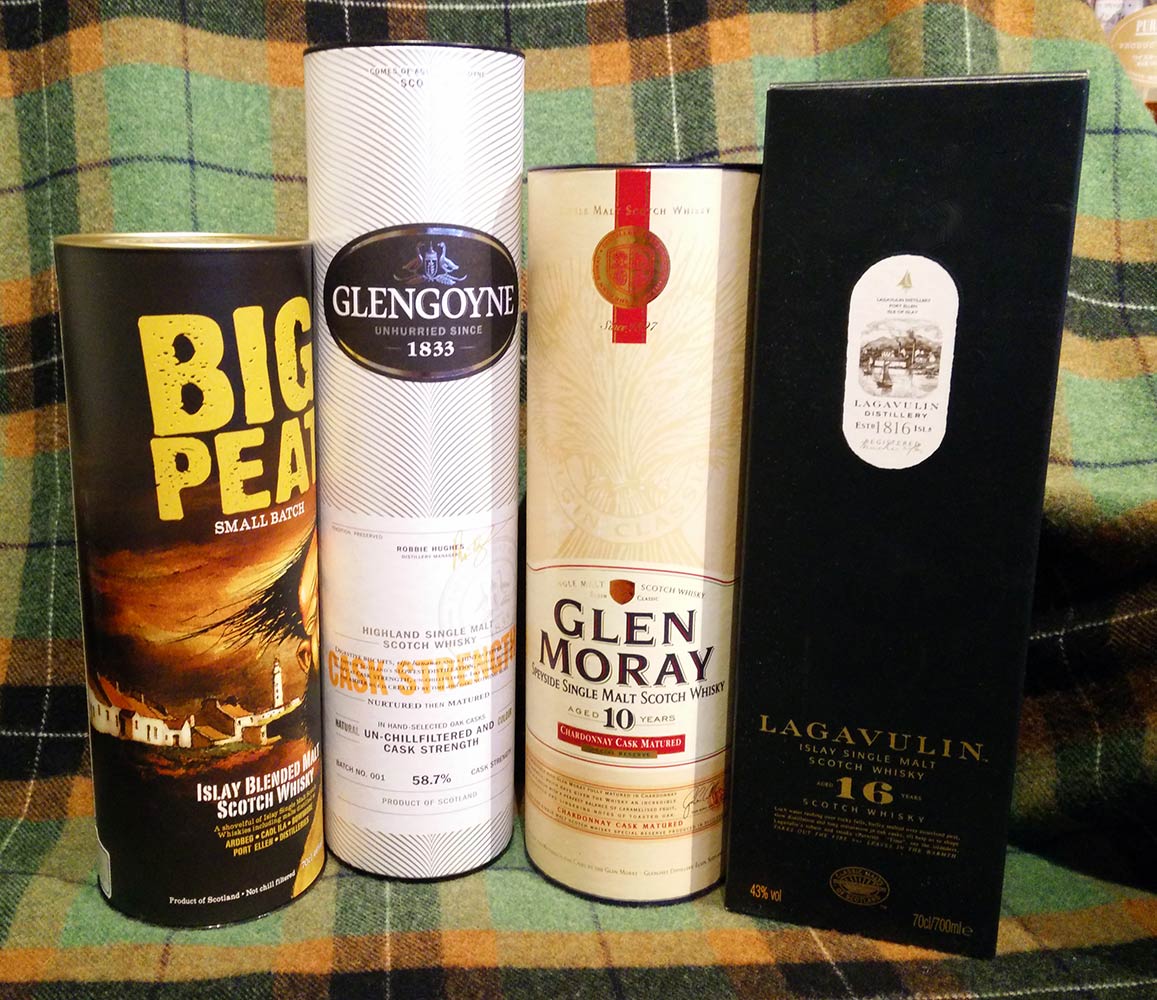
Which side of the “NAS vs. Age Statement” debate are you on? Do you boycot NAS whiskies? Do you buy everything you find tasty regardless of what it (doesn’t) say on the bottle? The heated arguments have been cooking for quite a while now and I’ve been meaning to write a blog post about this minefield for quite some time. I’m a bit late to the party, I know, but I really wanted to make a post painting the whole picture about the topic. In case you’re new to the scene: “NAS” stands for “no age statement” whiskies.
1. Why NAS Whiskies?
First and foremost: Whiskies without an age statement on the label are not a new thing. In the area of blended Scotch they make up the vast majority and have been on the market ever since the first Scotch was bottled (or sold by the barrel to the consumer in times long gone). As far as Single Malt Scotch Whiskies are concerned, we’ve had a long timespan now where almost every bottle carried an age statement and the marketing people wanted us to believe that older is better (and thus has to be oh so much more expensive). But there have been NAS whiskies long before the current flooding of the market. I’m thinking about Ardmore Traditional Cask, the Springbank/Longrow/Hazelburn C.V. mixed-vintage bottlings (now replaced by similarly good NAS bottlings) or Laphroaig Quarter Cask. These are just three examples of whiskies without an age statement that offer(ed) a quality product at an affordable price point and there are many more.
Okay, so we’ve established NAS whiskies having been there for quite some time without (too) much fanfare and mostly praise from those who enjoyed them. So, the big question is: why the current explosion of whiskies without age statements on the shelves? One only needs to look at the published numbers which are there for all to see. I will not elaborate too much on that part, a fellow blogger over at “Diving for pearls” has already completed the task of going through the data. Do take the time to read his series of articles here, here and here.)
The bottom line: Stocks of malt over 10 years old are rapidly depleting, frankly, because we drank too much and distillers didn’t increase production quickly enough (and you can’t blame them, thinking about the bust times not too long ago). Distillers (and to a point also independent bottlers) are now facing a dilemma: At the current rate of sales some can’t keep supplying their most popular products with enough stock to make ends meet. They then have two choices:
– Allocate the product at a rate in balance with production and maturation levels
– Get creative with the younger stock and bottle it to satisfy demand
But: Distillers have increased production and, according to the aforementioned series of articles, there will be a crossover point at the end of this decade when stocks aged 10 years+ will probably start to grow again (if current trends continue). It all depends on the rate of depletion per age category – 20, 30 and even 40year-old whisky stocks will take much longer to replenish if they have been bottled “over budget” (and there are indications of this), but there’s no published data to rely on. In any case, it will be interesting to see what will happen when the break-even point for roughly 10-year old whisky arrives, which makes up the largest age group. Until then we will have to live with more and more young stock appearing on the market. And no, this is not necessarily a bad thing, if done right, young whisky can taste just as great as old whisky can taste bad (and vice-versa).
2. What’s the gripe people are having with NAS Whiskies?
For the most part we are dealing with negative feelings against the well-known, mass-market, NAS whiskies, set out to replace other bottlings with age statements. Products from smaller/indie distilleries or independent bottlers with “craft” presentation and careful selection of casks are not as heavily criticised, if at all. If you browse the forums, blogs, look at facebook groups and twitter the general feeling amongst whisky lovers is you’re getting younger product of inferior quality at sometimes lower bottling strength at higher prices than the “good old” juice. From a technical perspective (not judging taste for a moment) they are right, more often than not. These days even older NAS bottlings are being replaced by newer NAS expressions of lesser bottling strength, chill filtration and so on. There are also numerous examples of entry-level bottles with age statements being either complemented by new NAS releases (like the Laphroaig Select), or, as in the case of the “Glenlivet 12”, replaced by a newer bottling either entirely or only in certain markets. So far this situation seems confined to mostly the entry-level offerings, but there are more wide-reaching lineup overhauls as well, as it was the case with The Macallan.
Yes, this is unfortunate, yes this is irritating and yes, some companies make it look like they don’t care for the customer at all. You cannot fault people for being disgruntled when reading lines like these:
“Founder’s Reserve will roll out in countries where whisky knowledge is strong, consumers are becoming more familiar with new concepts, are by far the most developed in their tastes and have the greater thirst for new products.”
Source
Let these lines sink in and ponder about them for a moment if you haven’t done so already.
All right, now that we’ve established why we’re seeing more and more bottles without an age statement on the shelves and why people aren’t happy about it, let’s get to the burning question: Are the NAS products inferior to the old ones?
3. NAS vs. Age statement from a sensory perspective
To answer the question of taste we need to talk quickly about two things happening when whisky is matured in oak casks:
– there’s an additive maturation where the spirit incorporates aromas from both the wood and, if applicable, formerly stored liquids
– there’s a subtractive maturation, where – this is only a very quick and abbreviated description – the harsh, unwanted components fade over time.
Now, the subtractive component can be strong even in used casks, which is why some entry-level malts (and more expensive ones too) are relatively light in flavour but rounded and without harshness at the same time. In order to get more flavour into the spirit in a shorter amount of time you need to use fresher wood, or casks which were freshly rinsed/impregnated with Sherry or Port (these two being the most prominent examples). This may impart more flavour components in a shorter amount of time than older, used casks do in a longer period of time, which results at a richer flavour of the younger whisky at first glance. At the same time these young whiskies can lack depth and might still exhibit a young, spirity, sometimes metallic character because of the lack of sufficient subtractive maturation, which, frankly, needs time – time, some NAS whiskies which were born out of demand and necessity probably aren’t always given. Even worse, when better casks simply weren’t used upon filling and some sort of quick “finishing” is done on very young stock to give the flavour a boost. You can mask imperfections, but you can’t always hide them. On a side note: You also have to keep in mind that using fresher, more active, freshly “sherried” or rejuvenated wood or techniques such as finishing probably cost more than the additional years of storage for the older product which might explain some portion of the price increases.
You might now ask yourself how distilleries like Kilchoman manage to produce a seemingly much more mature product at a younger age, if you need subtractive maturation? Well, the character of the spirit plays a key role too – and in the case of Kilchoman the peat smoke helps as well (but not always). You can tune factors in mashing and distillation to minimize unwanted components as much as possible. The existing “big distilleries” can’t just change the character of their malt to accommodate for the shorter maturation quite as much as a new distillery can where these factors are calculated into the design.
4. What to do about it as a consumer
Fine, now that we’ve established all the previous points – what should we as consumers do? Well, there is a very vocal group of people who refuse to buy NAS whiskies at all. They might miss out on some great whiskies in doing so, as completely boycotting this category also hurts those who have been releasing consistently good NAS drams for a long time. Reward, not punish those, who are doing NAS whiskies the “right way”, with disclosure, higher bottling strength, no chill filtration and natural colour. NAS is here to stay for the foreseeable future and not necessarily a bad thing per se. We just have to deal with it.
Always remember: You can vote with your wallet! If you dislike how a certain company treats you as a customer, take your money elsewhere! If you don’t want to buy malts at 40% with chill filtration and colouring, pass them by. With over 100 active malt distilleries in Scotland there’s so much more booze out there than you could ever dare to try! Make sure you tell the sales people and the distilleries in an appropriate and polite way. They are monitoring and listening.
A word of advice when you’re thinking about buying NAS whiskies: Beware and take care if new NAS whiskies are introduced to replace or stand alongside older bottlings which carried age-statements, chances are very high they are simply younger drams at probably higher prices. Because, let’s face it, if they were older, they’d put it on the label. Read reviews and comparisons, try them at shows, share a bottle amongst friends or the local whisky club. Make up your own mind. They might be worse than the ones carrying an age statement, they might be equal, they might even be better (gasp!).
Personally I’m following the guideline “If it’s tasty, and the price/performance ratio is right, I’ll consider it, age statement or not”. If it’s presented the “right way” (46% ABV or more, no chill filtration and no colouring) that’s a huge bonus and a sign whoever bottled the whisky cared about presentation and the customer – age statement or not. In an ideal world I’d like an age statement on every bottle and I do hope the SWA reconsiders rules and regulations to better accommodate for precise labeling of multi-vintage whiskies and respective percentages which would end much speculation and help those producers who care about transparency (and call out those who don’t which is the main point of why it’s probably not going to happen).
Right now there’s also an interesting experiment by Oliver Klimek, which, full disclaimer, I’m also part of. We’re blindly comparing one NAS whisky and one age statement dram from the same distillery with two groups comparing malts from five different distilleries each. A very interesting experiment and I’m very much looking forward to finding out about the results as I’m sure they will shed more light on the sensory aspects.
Let me know your thoughts on the issue in the comments section below. And always remember: Enjoying whisky should be fun! We’re supposedly ladies and gentlemen – voice your opinion respectfully and if you feel the need to punish someone, do it where it hurts: with purchasing decisions. Thanks!



One Reply to “NAS vs age statement whiskies – what it’s all about”